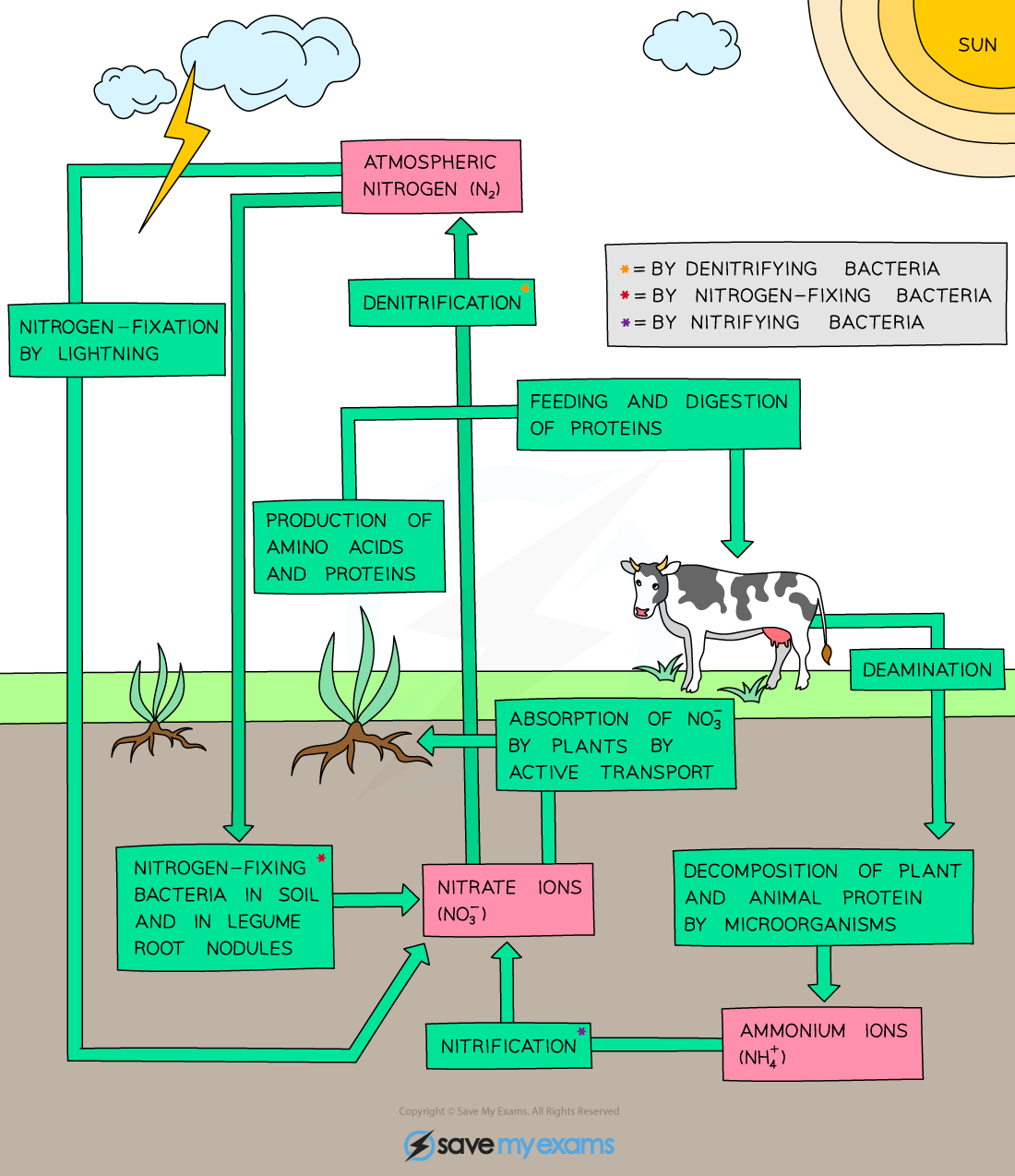The Nitrogen Cycle
- Nitrogen as an element is required to make proteins
- Neither plants nor animals can absorb it from the air as N2 gas is very stable and the bonds holding the nitrogen atoms together would need massive amounts of energy to break (the two nitrogen atoms in a nitrogen molecule are held together by a triple covalent bond)
- However, there are two ways it can be taken out of the air and converted into something easier to absorb:
- Nitrogen fixing bacteria found ‘free living’ in soil and also in the root nodules of certain plants (peas, beans, clover – we call them leguminous plants) take N2 gas and change it into nitrates in the soil
- Lightning can ‘fix’ N2 gas, splitting the bond between the two atoms and turning them into nitrous oxides like N2O and NO2 that dissolve in rainwater and ‘leach’ into the soil
- Plants absorb the nitrates they find in the soil and use the nitrogen in them to make proteins
- Animals eat the plants (or other animals) and get the nitrogen they need from the proteins in the plant or animal
- Waste (urine and faeces) from animals sends nitrogen back into the soil as ammonium compounds (the urea in urine contains nitrogen)
- When the animals and plants die, they decay and all the proteins inside them are broken down into ammonium compounds and put back into the soil by decomposers
- The plants can’t absorb ammonium compounds though, so a second type of soil bacteria, nitrifying bacteria, convert the ammonium compounds to nitrites and then to nitrates, which can then be absorbed by plants – and so the cycle goes on
- Finally, there is a third, unhelpful type of (anaerobic) bacteria called denitrifying bacteria found in poorly aerated soil (ie not much oxygen)
- These bacteria take the nitrates out of the soil and convert them back into N2 gas
- Farmers can help reduce the amount of these unhelpful bacteria by ploughing and turning over soil

The nitrogen cycle
转载自savemyexam










